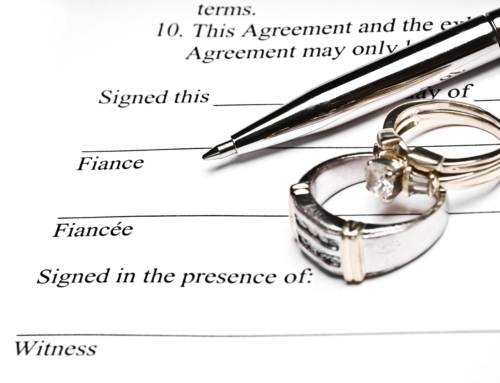In short the procedure to obtain a divorce is quite straightforward. There are a reasonable number of alien words which are used, but hopefully this blog will help in demystifying them.
The first step is that you need to prove that the marriage has irretrievably broken down. You can do this by proving one of FIVE grounds:
1.) Adultery and the petitioner finds it intolerable to live with the respondent:
Bear in mind that, with this ground, you must not only have an adulterous affair but also find it intolerable to live with the person. So, if you continued to live together having tried to reconcile or lived together for a further six months after the adultery, this is not the appropriate ground.
If this is the appropriate ground then it is worthy of note that it is not common practice to name the person with whom the adultery was committed in the petition. This will normally lead to objections and the whole process becoming much more costly and drawn out. So it is advisable to leave that detail out.
2.) Unreasonable behaviour:
This is by far and away the most common ground and what is meant by certain tabloid publications when they refer to a ‘quicky divorce’. Please note, the point about it being a ‘quicky’ is misleading. It only means that you can apply for a divorce sooner (as detailed below) and not that the procedure is any quicker!
Unreasonable behaviour is subjective and so can include anything. However, as general guidance, it is sensible to keep the allegations as banal as possible to avoid any unnecessary contest. The normal points relied on are that the petitioner felt unloved because of actions taken by the respondent. However, I have heard of a case where the wife made reference to her husband continuing to tickle her feet despite repeated requests for him not to do so! This shows that behaviour is a reasonably broad spectrum. It is normal to rely on around five or six points when making your application.
On the other side, if you are in receipt of divorce papers and you do not accept that you have behaved unreasonably, it is sensible to accept the application but state on the acknowledgement of service that you don’t accept the allegations. This avoids the need for a costly and pointless trial that will undoubtedly end in the same order whatever findings are, or are not, made.
3.) Desertion:
This is rarely used as it requires that the respondent has deserted the petitioner for two years. Desertion is defined as the unjustifiable withdrawal from cohabitation with the intention of being separated permanently. If a spouse were to find themselves in this position, it would be more sensible to claim for unreasonable behaviour than to try and prove desertion.
4.) Separation for two years with consent:
This is the most straightforward ground. It is necessary to show that the parties are emotionally and physically separated. This will not be a problem if the parties have lived physically separate for a period of at least two years. They can still be living in the same house so long as it can be proved that they are living separate lives. This can cause difficulty in situations where the parties cannot afford to live apart and have to show that they are separate. Therefore, often one party will find it more straightforward to simply rely on unreasonable behaviour.
The Respondent must agree to the divorce proceeding on this basis. Otherwise, there is a bit of a wait…
5.) Separation for five years without consent:
This is rarely used as waiting five years when a spouse will not consent is agony. Again, in these circumstances, most petitioners will opt to petition under unreasonable behaviour.
The one-year rule:
It is worthy of note that for public policy reasons you cannot apply for a divorce until you have been married for at least one year. You can separate, but should not petition prior to that time as the petition will be rejected.
Procedure:
The person applying for the divorce is called the Petitioner. Within the petition, the Petitioner will need to state what they want to happen with regards to legal costs (should there be any). The normal course is to bear them equally but if there is a particularly badly behaved spouse, or if one party has the greater income, it is possible for the Petitioner to apply for an order that the other party (the Respondent) pay the costs of the divorce suit. If an order is made, it will relate only to the costs of the divorce itself and not to costs associated with any financial settlement.
Once issued by the Court, the petition will need to be acknowledged by the Respondent. This is done by the Respondent completing and sending to the Court an Acknowledgement of Service. If the Respondent fails to acknowledge the petition, then it might be necessary for the Petitioner to make an application for deemed service to prove that the Respondent has seen the petition but has failed to respond.
Once the Acknowledgement of Service has been filed by the Respondent, the Court will notify the Petitioner who will then need to make the necessary application for Decree Nisi (which includes the filing of a statement in support).
Once the Court receives the Petitioner’s application for Decree Nisi and Statement in Support, they will notify the parties of the date on which the Decree Nisi will be pronounced. The Decree Nisi is in basically an interim divorce. Neither party will be required to attend Court when the Decree Nisi is pronounced unless the Respondent objects to the grounds and want to contest the divorce or objects to the costs order requested in the petition. Even then, an objection to costs can usually be made in writing.
Once the Decree Nisi is pronounced by a District Judge, there is a wait of at least six weeks before the Petitioner can make the application for the final divorce (known as Decree Absolute). However, it is advisable that the financial aspects of the divorce are dealt with either by consent or court order prior to the making of Decree Absolute as this can cause issues with claiming spousal maintenance and over pension rights/inheritance.
Once the financial aspects are resolved, the Petitioner can make the application for Decree Absolute, which usually takes a few weeks to process.
As explained above, the Petitioner can apply for decree absolute six weeks and one day after the decree nisi is pronounced.
It is possible for a Respondent to apply for decree absolute three months’ after that date if the Petitioner has failed to do so. Again, as stated above, it is sensible for both parties to wait for the financial aspects of the divorce to be finalised before making the application for Decree Absolute.








